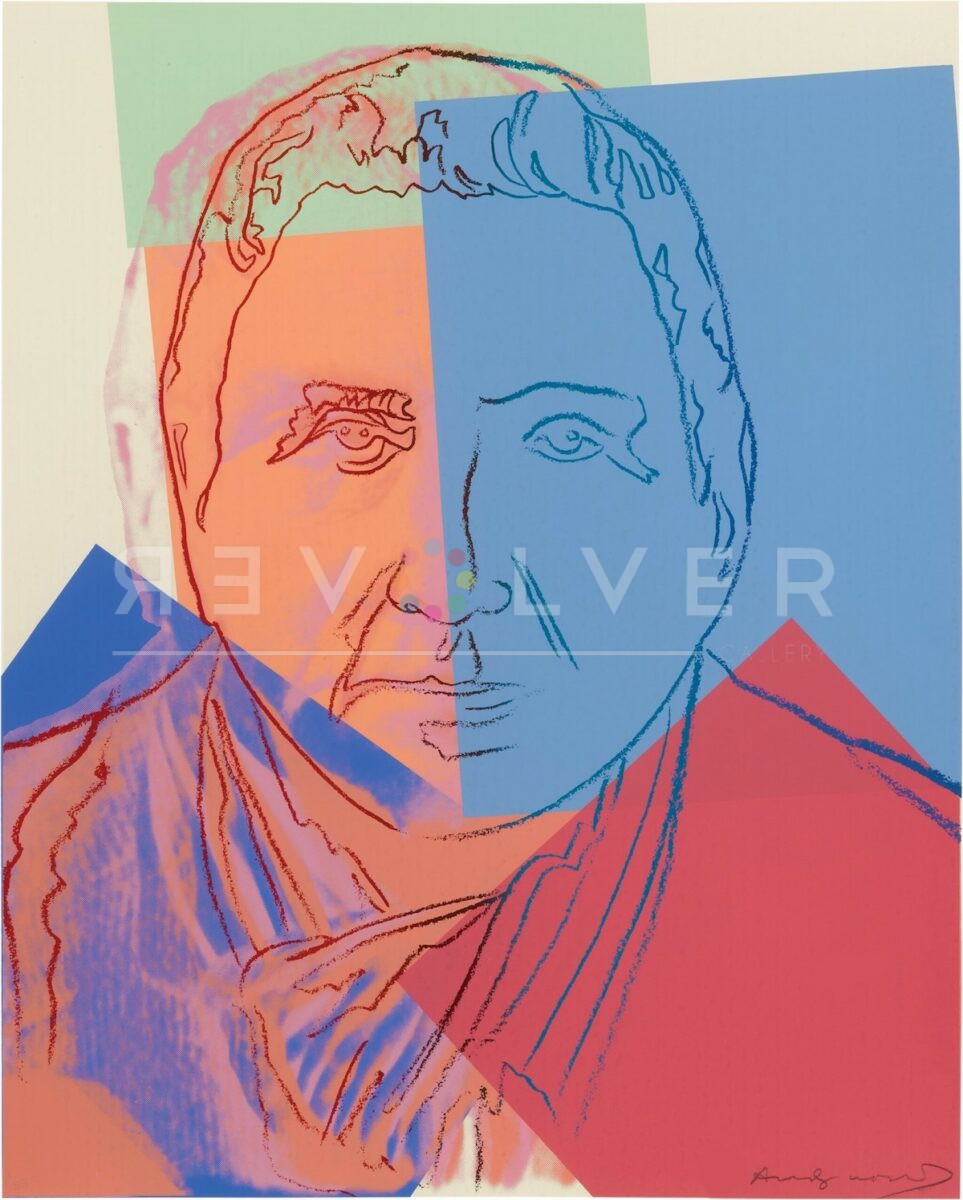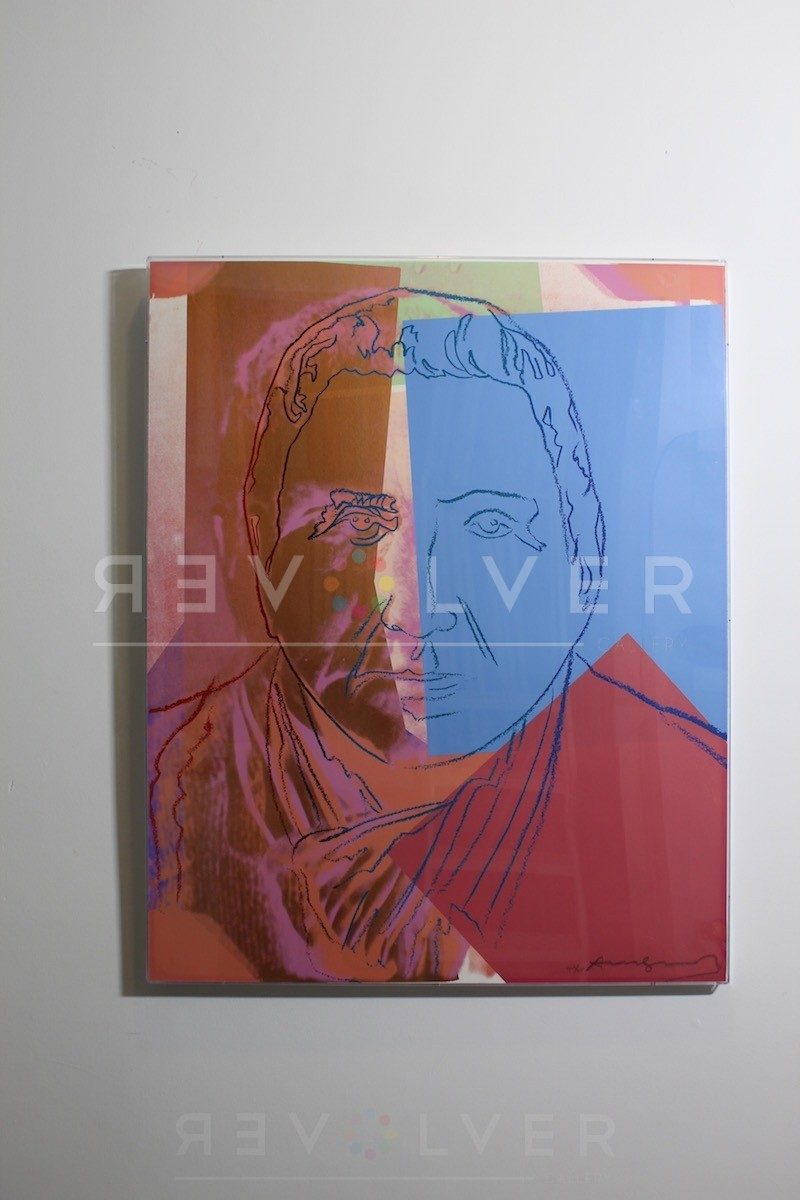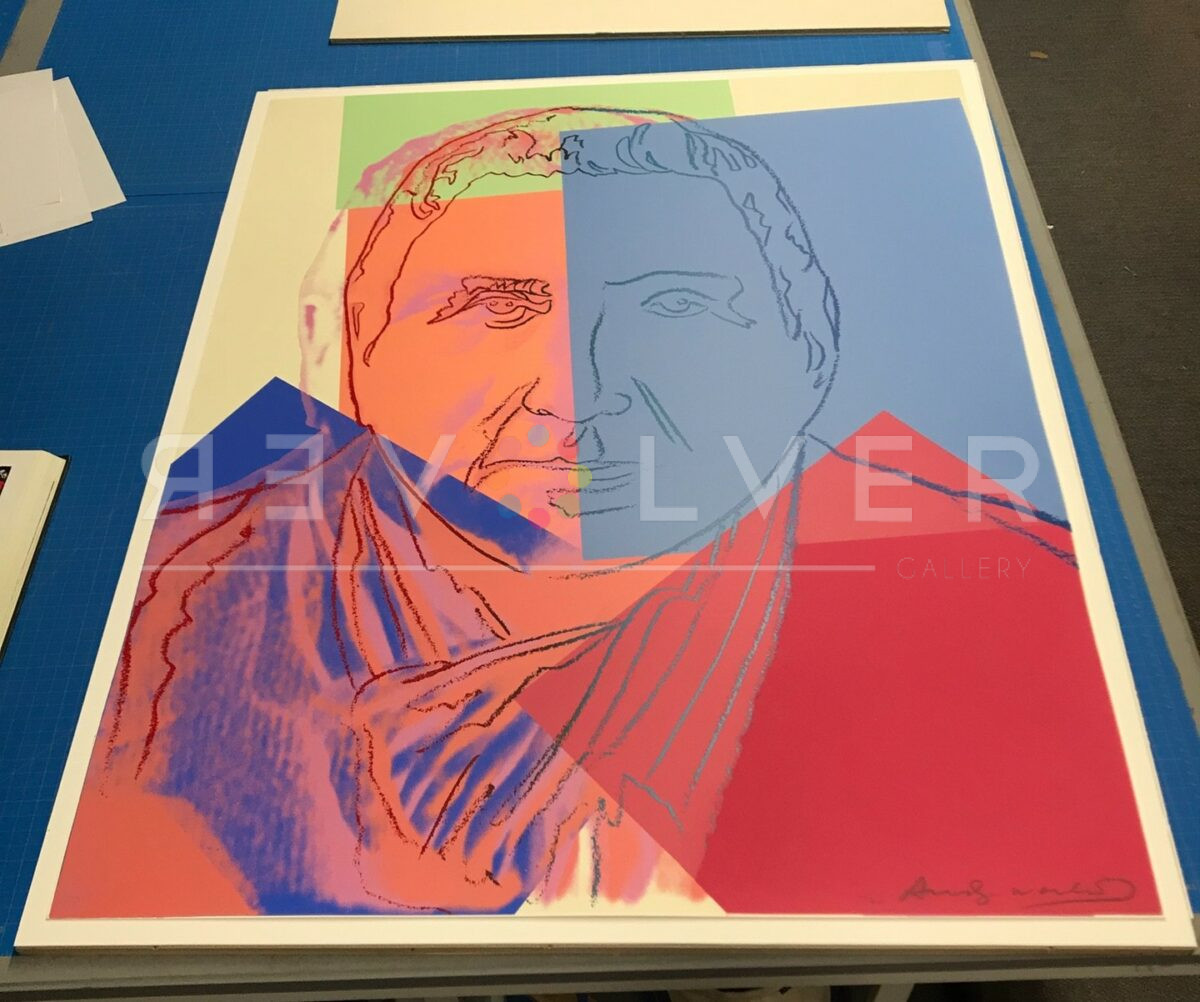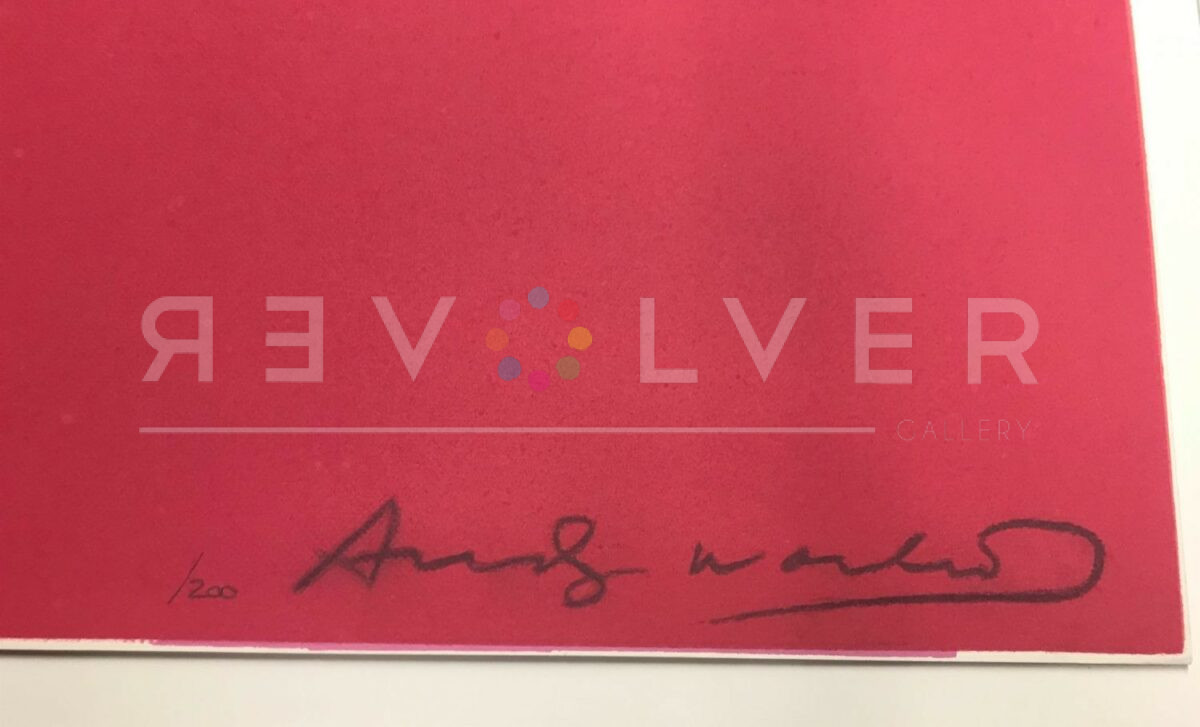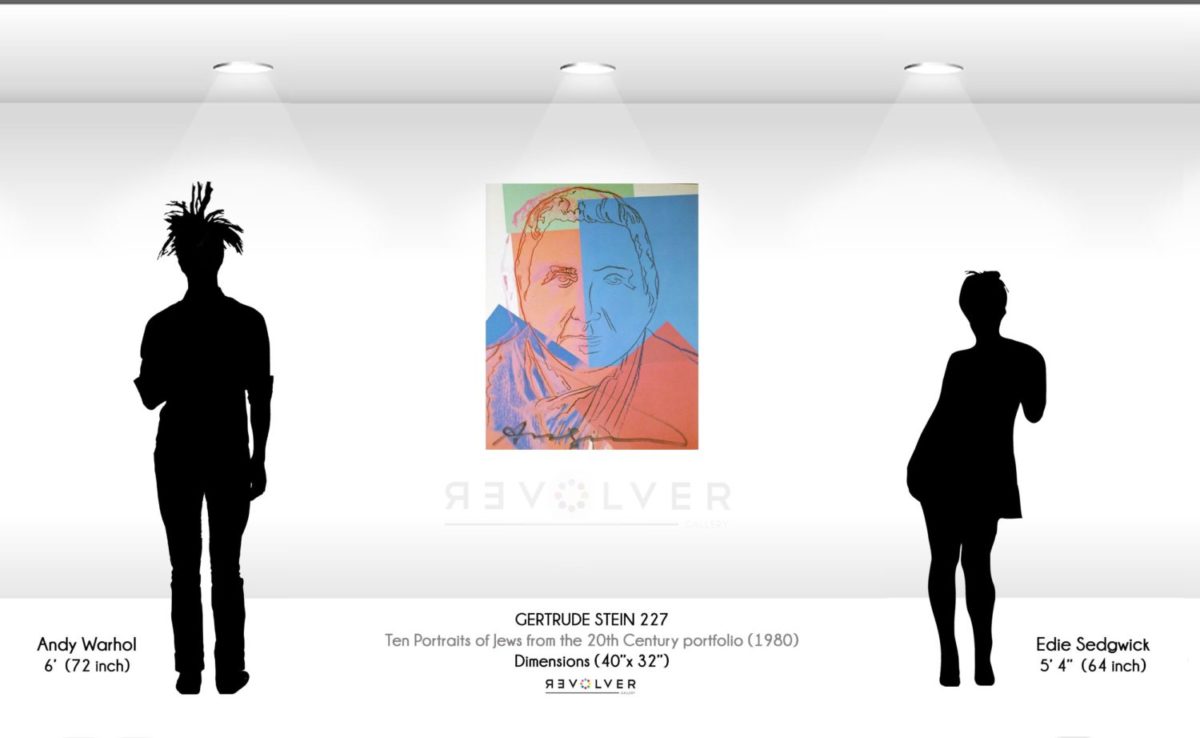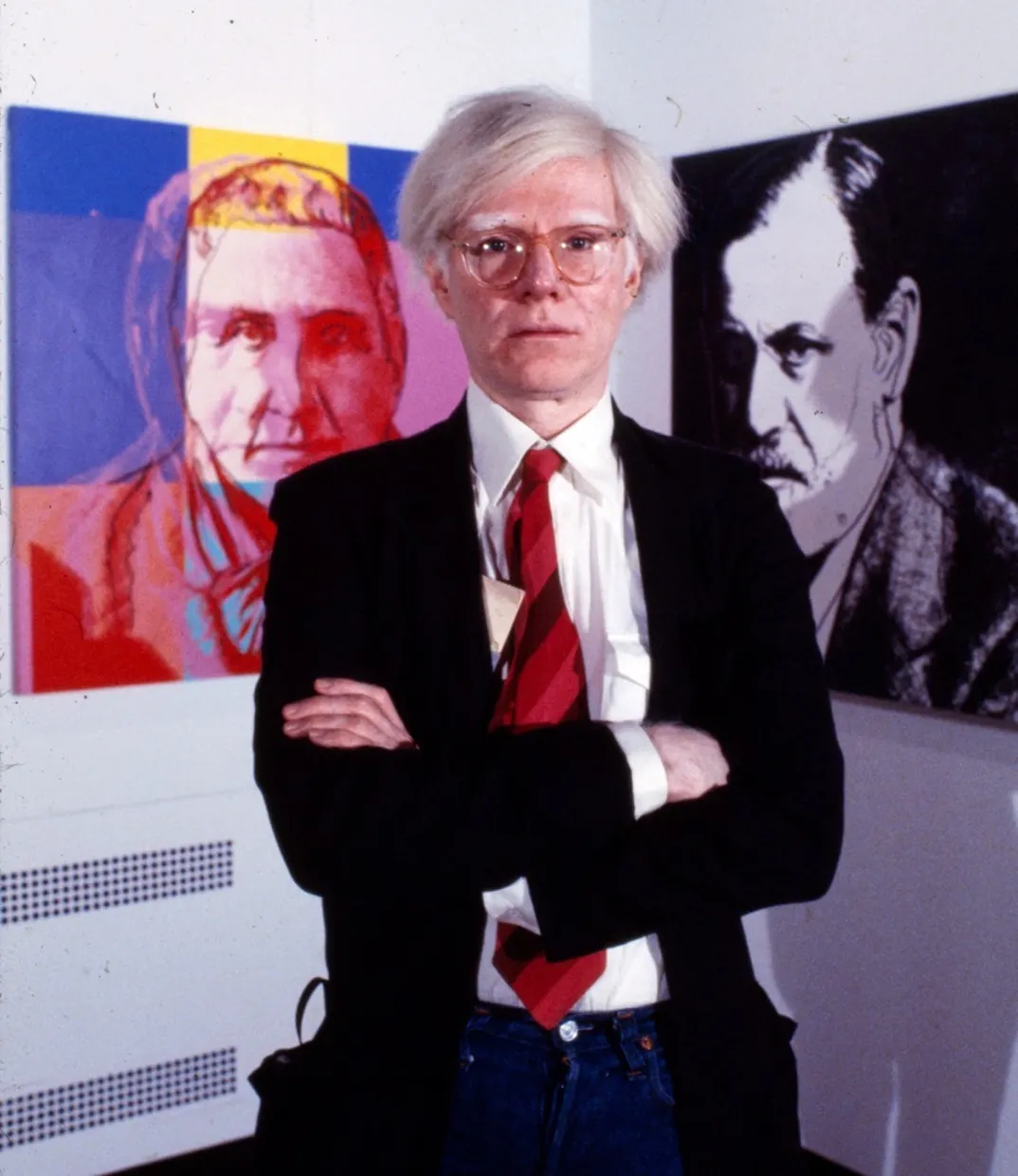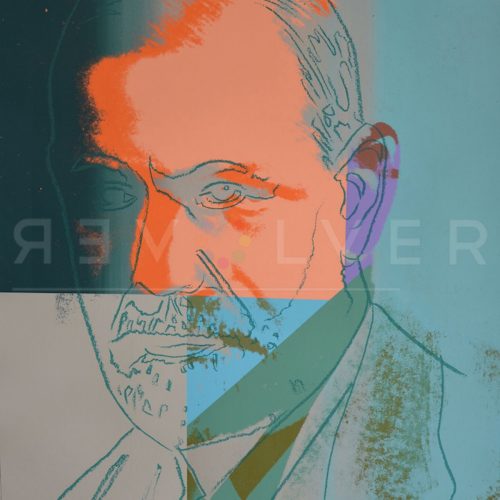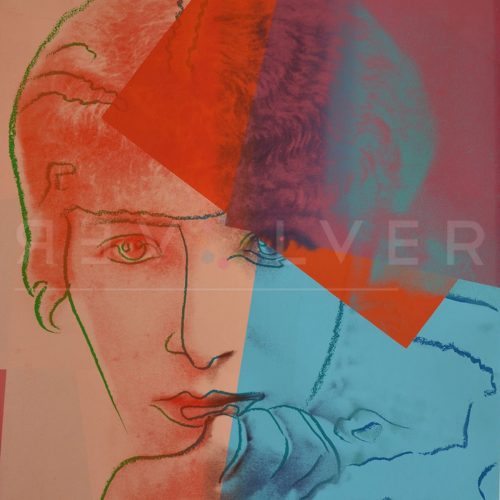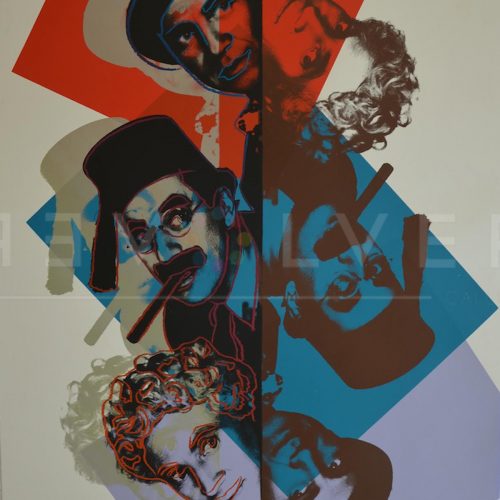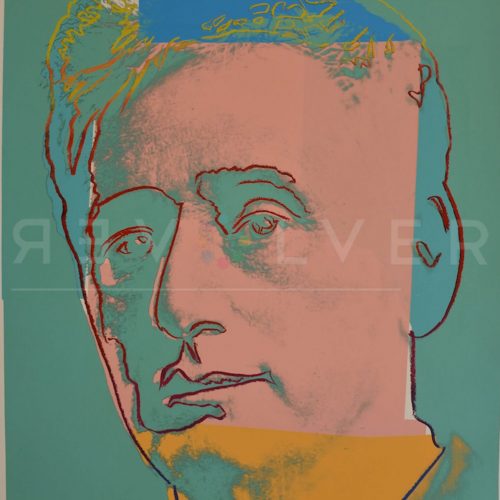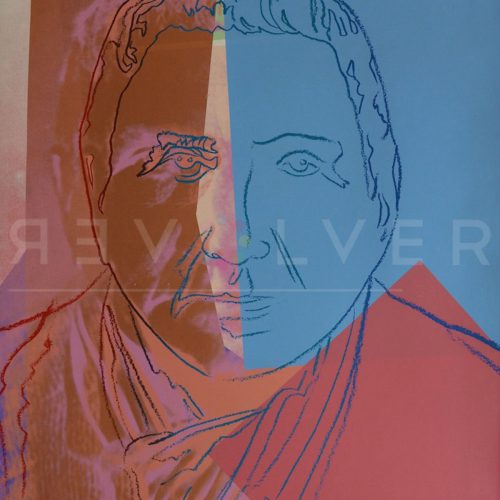Gertrude Stein 227 by Andy Warhol is a screenprint from the Ten Portraits of Jews of the Twentieth Century series, published in 1980. This artwork captures the essence of Gertrude Stein (1874–1946), an American author who became a central figure in the Parisian artistic community in the early 20th century. Stein’s influence extended beyond literature; she was a fervent collector of Modernist art and played a pivotal role in supporting artists like Matisse and Picasso.
Stein’s life in Paris was marked by her weekly literary salons, which became a hub for avant-garde artists and writers. It was during this period that she formed a close friendship with Pablo Picasso, who painted her portrait in 1906 during his Rose Period. This earlier portrait by Picasso captures a younger Stein, with a contemplative expression, hinting at the intellectual depth she possessed.
Warhol’s rendition of Stein, on the other hand, offers a different perspective. It portrays her later in life, with a penetrating gaze that seems to transcend time. This gaze, intense and unwavering, speaks volumes about her life, her contributions to art and literature, and her enduring legacy. The use of vibrant colors and abstract geometric shapes in the background adds a contemporary touch, contrasting with the classic, timeless feel of the portrait itself.
The artwork is a testament to Warhol’s ability to capture the essence of his subjects. While he was known for his fascination with celebrities and pop culture, in this series, he delves deeper, portraying figures of historical and cultural significance. Stein, with her contributions to literature and her role in the Parisian art scene, fits perfectly into this narrative.
Warhol’s choice of Stein for this series is particularly intriguing given her connection to Picasso. By portraying her, Warhol not only pays tribute to Stein but also draws a parallel between two great artists of different eras—Picasso and himself. This connection adds a layer of depth to the artwork, making it a conversation piece that sparks discussions about art, history, and the interconnectedness of it all.
In terms of technique, Warhol’s Gertrude Stein 227 is a masterclass in screen printing. The layering of colors, the hand-drawn lines in red and blue, and the deliberate misalignment with certain elements of the source photograph showcase Warhol’s expertise and his ability to push the boundaries of the medium. The artwork, while being a part of the Ten Portraits of Jews of the Twentieth Century series, stands out on its own, making a statement about the subject and the artist’s interpretation of her.
Andy Warhol’s portrait of Gertrude Stein is more than just a representation of a historical figure. It is a dialogue between past and present, between two great artists, and between the subject and the viewer. The penetrating gaze of Stein, captured brilliantly by Warhol, invites viewers to delve deeper, to explore the layers of meaning, and to appreciate the genius of both Stein and Warhol.

